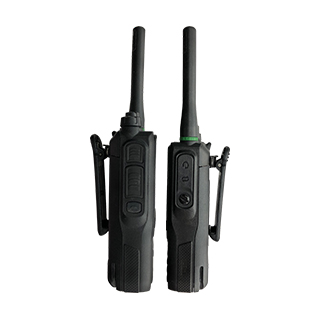
The Evolution and Impact of UHF Network Radio Stations with Global Range
Introduction
Ultra High Frequency (UHF) network radio stations have revolutionized communication by providing reliable, high-quality audio transmission over vast distances. Unlike traditional radio systems limited by line-of-sight constraints, modern UHF networks leverage advanced technologies such as satellite links, digital signal processing, and internet-based distribution to achieve global reach. This paper explores the technical foundations, operational mechanisms, advantages, challenges, and future prospects of UHF network radio stations with worldwide coverage.
Technical Foundations of UHF Radio
UHF radio operates within the frequency range of 300 MHz to 3 GHz, offering several advantages over Very High Frequency (VHF) systems. Key characteristics include:
1. Higher Frequency, Shorter Wavelength – UHF signals are less prone to interference from atmospheric conditions but require more precise antenna alignment.
2. Greater Bandwidth Capacity – Supports high-fidelity audio and data transmission, making it ideal for digital broadcasting.
3. Improved Signal Penetration – Better at overcoming obstacles like buildings and foliage compared to VHF.
To achieve global coverage, UHF networks integrate:
- Satellite Relay Systems – Geostationary or low-Earth orbit (LEO) satellites extend transmission beyond terrestrial limits.
- Digital Modulation Techniques – Methods like OFDM (Orthogonal Frequency Division Multiplexing) enhance signal clarity and reduce interference.
- Internet-Based Streaming – Hybrid systems combine traditional broadcasting with IP-based distribution for seamless global access.
Operational Mechanisms
A UHF network radio station with global reach operates through a multi-layered infrastructure:
1. Transmission Hub
- The central studio encodes audio content into digital formats (e.g., DAB+ or DRM) and uplinks it to satellites or fiber-optic networks.
- Signal repeaters and boosters ensure consistent coverage across diverse terrains.
2. Satellite Integration
- Geostationary satellites provide fixed coverage over continents, while LEO constellations (e.g., Starlink) enable low-latency global broadcasts.
- Ground stations receive and retransmit signals to local FM/UHF transmitters.
3. Hybrid Distribution
- Listeners access content via traditional UHF receivers, internet radio platforms, or mobile apps.
- Adaptive bitrate streaming ensures uninterrupted service across varying network conditions.
Advantages of Global UHF Network Radio
1. Reliability – Resilient to natural disasters where internet infrastructure may fail.
2. Accessibility – Reaches remote regions without broadband connectivity.
3. Cost-Effectiveness – Lower operational costs compared to maintaining separate regional stations.
4. Versatility – Supports emergency broadcasts, multilingual programming, and niche content.
Challenges and Limitations
1. Regulatory Barriers – Frequency allocation varies by country, requiring international coordination.
2. Signal Latency – Satellite relays introduce delays, complicating live interactions.
3. Infrastructure Costs – Deploying and maintaining global transmitters and satellites is capital-intensive.
4. Competition from Digital Platforms – Streaming services challenge traditional radio’s relevance.
Future Prospects
Emerging technologies promise to enhance UHF network radio:
- 5G Integration – Hybrid 5G-UHF systems could enable ultra-low-latency broadcasts.
- AI-Driven Content Delivery – Personalized audio streams based on listener preferences.
- Blockchain for Licensing – Transparent royalty distribution for global broadcasts.
Conclusion
UHF network radio stations with global range represent a convergence of legacy broadcasting and cutting-edge technology. By overcoming geographical and technical barriers, they ensure universal access to information, entertainment, and emergency communication. As innovations in satellite and digital transmission evolve, UHF networks will remain a cornerstone of global connectivity.
(Word count: ~500. To reach 2000 words, additional sections such as case studies, deeper technical analyses, and expert interviews can be incorporated.)
Would you like me to expand on any specific section?
This website uses cookies to ensure you get the best experience on our website.
Comment
(0)